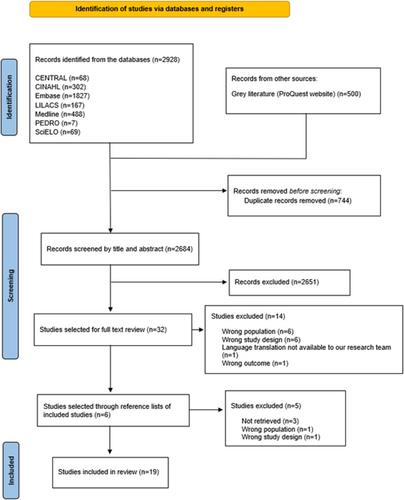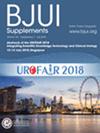Conservative interventions for female exercise-induced urinary incontinence: a systematic review
Abstract
Objective
To systematically review and synthesise what is known about the effectiveness of non-pharmaceutical conservative interventions for the management of urinary incontinence (UI) experienced by women during physical exercise.
Methods
A systematic search was performed in the following databases in September 2023: the Medical Literature Analysis and Retrieval System Online (MEDLINE), Cumulative Index to Nursing and Allied Health Literature (CINAHL), Excerpta Medica dataBASE (EMBASE), Scientific Electronic Library Online (SciELO), Latin American and Caribbean Health Sciences Literature (LILACS), and Physiotherapy Evidence Database (PEDro). Studies were deemed eligible if population consisted of females who reported symptoms of UI while participating in physical exercise, and the interventions involved any non-pharmaceutical conservative treatment to manage symptoms during exercise. The primary outcome was severity of UI signs and symptoms. The protocol was registered in the International Prospective Register of Systematic Reviews (PROSPERO identifier: CRD42022379138).
Results
Of the 3429 abstracts screened, 19 studies were retained. Pelvic floor muscle training (PFMT) and intravaginal devices were the most commonly investigated modalities. Only two randomised controlled trials (RCTs), both among volleyball players, compared PFMT with no PFM exercise, showing a reduction in pad weight gain after the intervention in the experimental groups only. PFMT with and without biofeedback randomised among soldiers demonstrated a reduction in the frequency of urine leakage episodes in both groups, while supervised and unsupervised PFMT randomised among athletes from different sports showed pad weight gain reduction in the supervised group only. Seven single-arm studies suggested that PFMT alone or combined with other modalities may reduce UI severity in active women based on questionnaires, bladder diaries, and self-reported symptoms. A single-arm and a crossover study found pessary use beneficial in reducing urine leakage based on questionnaires and pad weight gain, respectively. When comparing pessary, tampon, and no intervention, two repeated-measures studies found tampons may reduce leakage more than pessaries in CrossFit exercisers and women performing aerobic exercises. A vaginal sponge also reduced pad weight gain during aerobic exercises. Other modalities (i.e., an intraurethral device, photobiomodulation, and combined therapies) were investigated using case series or single case studies. While all interventions showed some evidence of effectiveness, the results must be interpreted with caution due to methodological limitations and high risk of bias. In particular, despite a high reliance on pad tests as a primary outcome, we identified inconsistencies in how pad tests were administered and interpreted.
Conclusion
Only the effectiveness of PFMT to reduce urine leakage during exercise has been evaluated through RCTs, with some evidence of effectiveness. We identified a clear need for higher quality studies, with better reporting on the interventions, and more judicious use and interpretation of outcome measures.


 求助内容:
求助内容: 应助结果提醒方式:
应助结果提醒方式:


